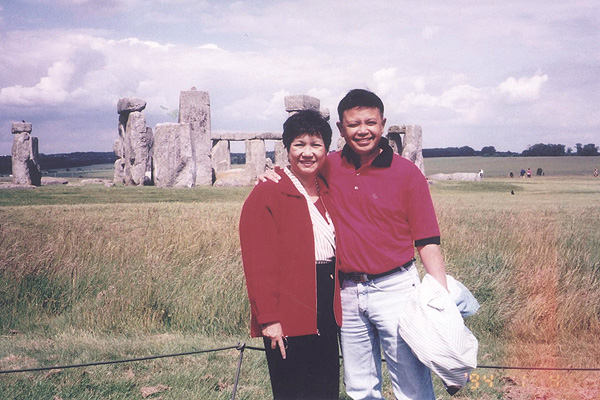For anyone visiting the British Isles it is a must to experience the aura and mystery surrounding the 5,000-year old ancient circle of stones at Stonehenge, the most significant and famous prehistoric monument in Europe.
Standing on Salisbury Plains in the Wiltshire county of southwestern England, the Stonehenge is also one of the wonders of the world as old as many of the great temples and pyramids of Egypt. The site and its surroundings were added to the UNESCO list of World Heritage Sites.
Stonehenge comes from the old English word “stan” meaning stone and “hencg” meaning hinge (hang).
The main part of the monument is a circular setting of giant standing stones that are believed to have been put in three main stages, c. 3100 – c. 1550 BC. Around the circle is an outer circle ditch and with a bank inside. Inside the bank is a ring of 56 pits called Aubrey Holes (known after their discoverer) and at the centre is a circle of enormous stones called bluestones (granite that was originally blue) about 13 feet high. Across the tops of the standing stones lie the flat blocks of stones called lintels. Inside this circle are five pairs of even larger stones arranged in the shape of a horseshoe and within these stones is another horseshoe of smaller stones.
Recently, an international archaeological survey team from the University of Birmingham in UK discovered two huge pits near the Stonehenge measuring 5 meters across and at least one meter deep believed to have been used for sun rituals at the summer solstice.
Because there is no written record left by the people who built the Stonehenge the reasons for building the Stonehenge are unknown although many theories have been advanced as to its original purposes.
Arcaheological evidence indicates that this mysterious structure is believed to have been a temple for sky worship and ritual and could possibly have served also as a burial ground from its early beginnings; or some type of a giant calendar to mark the beginnings of the season and forecast eclipses of the sun and the moon as declared by the American astronomer Gerald Hawkins; or as an astronomical observatory to observe the risings and settings of the sun and the moon.
No one knows exactly how the builders of the Stonehenge carried the heavy stones over such a very long distance. It is believed that they were dragged all the way about 140 miles away from the hills of Prescelly in southwest Wales.
How to reach Stonehenge? Take a train from London Waterloo to Salisbury and then Wilts & Dorset Stonehenge Tour Bus to the site.
























